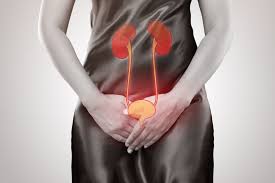Water Infection
Below is a comprehensive, structured report on water infection, covering essential aspects from definition and history to prevention and future research. This report uses information from reputable health sources to provide an in-depth overview suitable for both the general public and medical professionals.
1. Overview
What is Water Infection?
Water infection refers to illnesses caused by consuming or coming into contact with contaminated water. These infections can result from a variety of pathogens—bacteria, viruses, parasites, and protozoa—that thrive in polluted water sources.
Definition and Description
Water infection, often discussed under the umbrella of waterborne diseases, is a condition resulting from pathogens in water that has been contaminated by sewage, agricultural runoff, or industrial pollutants. The infection can affect multiple body systems depending on the type of pathogen and the route of exposure.
Affected Body Parts/Organs
- Gastrointestinal Tract: Most common symptoms include diarrhea, vomiting, and abdominal pain due to ingestion of contaminated water.
- Skin and Eyes: Contact with contaminated water can cause rashes, conjunctivitis, and other dermal or ocular infections.
- Respiratory System: Inhalation of aerosolized water droplets may lead to respiratory infections in some cases.
Prevalence and Significance
Water infections represent a significant public health issue worldwide, particularly in regions with limited access to clean water and sanitation. The World Health Organization (WHO) estimates that waterborne diseases contribute to millions of cases of illness and a significant number of deaths annually, especially among vulnerable populations such as children and the elderly.
2. History & Discoveries
When and How Was Water Infection First Identified?
- Early Recognition: Historical accounts of waterborne illnesses can be traced back centuries. Outbreaks of cholera and dysentery, for instance, were recorded in ancient civilizations.
- Scientific Advancements: The identification of microbial causes of these infections became clearer during the 19th century with the advent of germ theory.
Who Discovered It?
- Pioneers: Scientists like John Snow, who is renowned for his work during the 1854 cholera outbreak in London, played a key role in linking water contamination to disease spread.
Major Discoveries and Breakthroughs
- Germ Theory and Public Health: The development of germ theory revolutionized the understanding of waterborne diseases.
- Modern Microbiology: Advances in microbiology and epidemiology have enabled the identification of specific pathogens responsible for various water infections.
- Sanitation Infrastructure: Innovations in water treatment and sanitation have dramatically reduced the incidence of these infections in many developed regions.
Evolution of Medical Understanding Over Time
Medical understanding has evolved from basic observation of symptoms to the detailed molecular characterization of pathogens, leading to improved diagnostic tools, treatment protocols, and public health interventions.
3. Symptoms
Early Symptoms vs. Advanced-Stage Symptoms
- Early Symptoms:
- Mild gastrointestinal discomfort, such as cramps and loose stools
- Slight fever and general malaise
- Advanced-Stage Symptoms:
- Severe dehydration, persistent vomiting, and profuse diarrhea
- Systemic symptoms including high fever, shock, or organ failure in severe cases (e.g., cholera)
Common vs. Rare Symptoms
- Common: Diarrhea, nausea, vomiting, and abdominal cramps are the most frequently reported symptoms of water infections.
- Rare: In some instances, neurological symptoms or severe respiratory distress may occur, particularly with certain types of bacterial or protozoal infections.
Symptom Progression
Symptoms generally begin within hours to days after exposure. Early signs may be self-limiting, but without prompt treatment—especially rehydration—symptoms can progress to severe dehydration and systemic complications.
4. Causes
Biological and Environmental Causes
- Pathogens: Bacteria (e.g., Vibrio cholerae, Escherichia coli), viruses (e.g., norovirus), and parasites (e.g., Giardia, Cryptosporidium) are common causative agents.
- Environmental Factors: Poor water treatment, inadequate sanitation, and contamination from agricultural or industrial runoff significantly contribute to the spread of water infections.
Genetic and Hereditary Factors
- Host Susceptibility: While the pathogens themselves are not hereditary, genetic differences in immune response among individuals can influence susceptibility and disease severity.
Known Triggers or Exposure Risks
- Contaminated Drinking Water: The most direct route of exposure is ingestion of untreated or poorly treated water.
- Recreational Water Use: Swimming or bathing in contaminated water bodies can also lead to infections.
- Natural Disasters: Floods and hurricanes can overwhelm water treatment systems, increasing the risk of waterborne disease outbreaks.
5. Risk Factors
Who Is Most at Risk?
- Age: Young children and the elderly are more vulnerable due to weaker immune systems.
- Geographical Regions: Areas with limited access to clean water and sanitation, often in developing countries, see higher infection rates.
- Occupation: Workers in agriculture, sanitation, or water treatment may be at increased risk.
Environmental, Occupational, and Genetic Factors
- Environmental: Living in regions with poor water quality or inadequate sanitation infrastructure increases risk.
- Occupational: Certain jobs that involve exposure to contaminated water, such as farming or waste management, may heighten the risk.
- Genetic: While not a direct genetic disease, individuals with certain immune deficiencies may experience more severe outcomes.
Impact of Pre-Existing Conditions
People with chronic illnesses or compromised immune systems (e.g., HIV/AIDS, malnutrition) are at higher risk for severe waterborne infections.
6. Complications
What Complications Can Arise?
- Dehydration: Severe fluid loss can lead to electrolyte imbalance, kidney failure, and shock.
- Organ Damage: Prolonged infection and dehydration may lead to damage in the heart, kidneys, and other organs.
- Secondary Infections: Weakened immunity can make individuals more susceptible to additional infections.
Long-Term Impact on Health
Repeated water infections, particularly in children, can lead to chronic malnutrition, stunted growth, and long-term gastrointestinal issues.
- Disability or Fatality Rates: Severe infections like cholera can be fatal if not treated promptly. The risk of mortality increases significantly in vulnerable populations without timely access to medical care.
7. Diagnosis & Testing
Common Diagnostic Procedures
- Stool Cultures and PCR: These tests identify bacterial, viral, or parasitic pathogens in the digestive tract.
- Blood Tests: To assess dehydration levels and detect systemic infections.
- Rapid Diagnostic Tests: Quick tests are available for common pathogens, such as cholera.
Medical Tests
- Imaging: In cases of severe infection, imaging tests like ultrasound may be used to evaluate organ function and complications.
- Serological Tests: To determine the immune response to specific pathogens.
Early Detection Methods and Their Effectiveness
Early diagnosis through laboratory testing is critical. Rapid diagnostic tests have significantly improved the speed and accuracy of detection, enabling prompt treatment and reducing complications.
8. Treatment Options
Standard Treatment Protocols
- Rehydration Therapy: Oral rehydration solutions (ORS) and intravenous fluids are the mainstay for treating dehydration caused by water infections.
- Antibiotics and Antiparasitics: Depending on the identified pathogen, specific antimicrobial or antiparasitic medications are prescribed.
Medications, Surgeries, and Therapies
- Medications: Broad-spectrum antibiotics may be used initially, followed by targeted therapy once the pathogen is identified.
- Supportive Care: Includes electrolyte replacement and nutritional support.
- Surgical Interventions: Rarely, surgical intervention may be required if complications like perforation or abscess formation occur.
Emerging Treatments and Clinical Trials
- Vaccine Development: Research is ongoing to develop vaccines against common waterborne pathogens such as cholera and certain types of E. coli.
- Novel Therapeutics: Studies are exploring the use of probiotics and advanced antimicrobial agents to prevent and treat infections more effectively.
9. Prevention & Precautionary Measures
How Can Water Infection Be Prevented?
- Water Treatment: Ensuring proper filtration, disinfection, and maintenance of water treatment facilities is critical.
- Sanitation: Improving sanitation infrastructure to prevent contamination from human and animal waste.
- Public Health Initiatives: Education on safe water practices and the importance of handwashing.
Lifestyle Changes and Environmental Precautions
- Boiling Water: In areas where water quality is uncertain, boiling water before use can reduce infection risk.
- Safe Storage: Use clean, covered containers to prevent recontamination.
- Hygiene Education: Community programs focused on personal hygiene and environmental cleanliness.
Vaccines or Preventive Screenings
While vaccines exist for certain waterborne pathogens (e.g., cholera), broad preventive measures rely on improved water quality and sanitation practices. Regular water quality testing and community health screenings are also vital.
10. Global & Regional Statistics
Incidence and Prevalence Rates Globally
- Water infections remain a major global health challenge, particularly in low- and middle-income countries. Outbreaks of diseases such as cholera, dysentery, and typhoid fever are still reported worldwide.
Mortality and Survival Rates
- Mortality rates vary depending on the pathogen and access to healthcare. For instance, untreated cholera can have fatality rates exceeding 50%, while timely intervention reduces this dramatically.
- Long-term complications and repeated infections can also lead to chronic health issues.
Country-Wise Comparison and Trends
- Developed Countries: Robust water treatment and sanitation systems have led to significantly lower rates of waterborne diseases.
- Developing Countries: Limited access to clean water and adequate sanitation continues to drive higher rates of infection, with periodic outbreaks often linked to natural disasters or infrastructure failures.
11. Recent Research & Future Prospects
Latest Advancements in Treatment and Research
- Innovative Diagnostics: Advances in molecular diagnostics and rapid testing are improving early detection and treatment outcomes.
- Vaccine Research: New vaccine candidates are under development to provide protection against common waterborne pathogens.
- Improved Therapeutics: Research into novel antimicrobial agents and adjunct therapies (such as probiotics) shows promise in reducing disease severity and preventing complications.
Ongoing Studies and Future Medical Possibilities
- Clinical trials are assessing the efficacy of combination therapies and new treatment regimens.
- Public health research continues to focus on improving water infrastructure and sanitation in high-risk regions.
Potential Cures or Innovative Therapies Under Development
While water infections are typically managed rather than “cured,” advancements in preventative medicine, immunization, and rapid response protocols could significantly reduce the burden of these diseases in the future.
12. Interesting Facts & Lesser-Known Insights
Uncommon Knowledge about Water Infection
- Seasonal Trends: Outbreaks of waterborne diseases often follow seasonal patterns, especially during the rainy season or after floods.
- Cultural Practices: In some regions, traditional water storage practices can either mitigate or exacerbate the risk of infection depending on hygiene standards.
Myths and Misconceptions vs. Medical Facts
- Myth: Waterborne diseases are only a problem in developing countries.
- Fact: Even in developed nations, lapses in water treatment or contamination events can lead to localized outbreaks.
- Myth: Boiling water is always sufficient.
- Fact: While boiling is effective against most pathogens, certain chemical contaminants require additional treatment methods.
Impact on Specific Populations or Professions
- Vulnerable Groups: Infants, the elderly, and immunocompromised individuals are at a heightened risk of severe outcomes.
- Occupational Exposure: Farmers, sanitation workers, and those involved in water management may face increased risks and require targeted preventive measures.
References
- World Health Organization – Overview and global data on waterborne diseases.
- Centers for Disease Control and Prevention – Information on water infection causes, symptoms, and prevention.
- Historical reviews on waterborne diseases and public health interventions.
- Historical analysis of John Snow’s work on cholera and water contamination.
- CDC – Details on symptoms and progression of water infections.
- CDC – Studies on risk factors associated with waterborne diseases.
- CDC – Complications and outcomes of severe water infections.
- CDC – Guidelines for the diagnostic testing of waterborne pathogens.
- WHO – Laboratory techniques for detecting water infection agents.
- CDC – Treatment protocols and supportive care for water infections.
- WHO – Therapeutic approaches and emerging treatments.
- WHO – Preventive measures and public health strategies for waterborne diseases.
- CDC – Prevention guidelines and recommendations.
- CDC – Global statistics and trends in waterborne infections.
- Recent research articles and clinical trial data on waterborne disease management.
This report synthesizes the current state of knowledge on water infection, offering a detailed exploration from historical context to future treatment prospects. The information provided is grounded in evidence-based research and reputable sources to support both clinical practice and public health education.



 4.1 Attribution Theory and Person Perception: Why We Judge People the Way We Do (Even When We’re Totally Wrong) Let’s be honest. We’ve all
4.1 Attribution Theory and Person Perception: Why We Judge People the Way We Do (Even When We’re Totally Wrong) Let’s be honest. We’ve all



